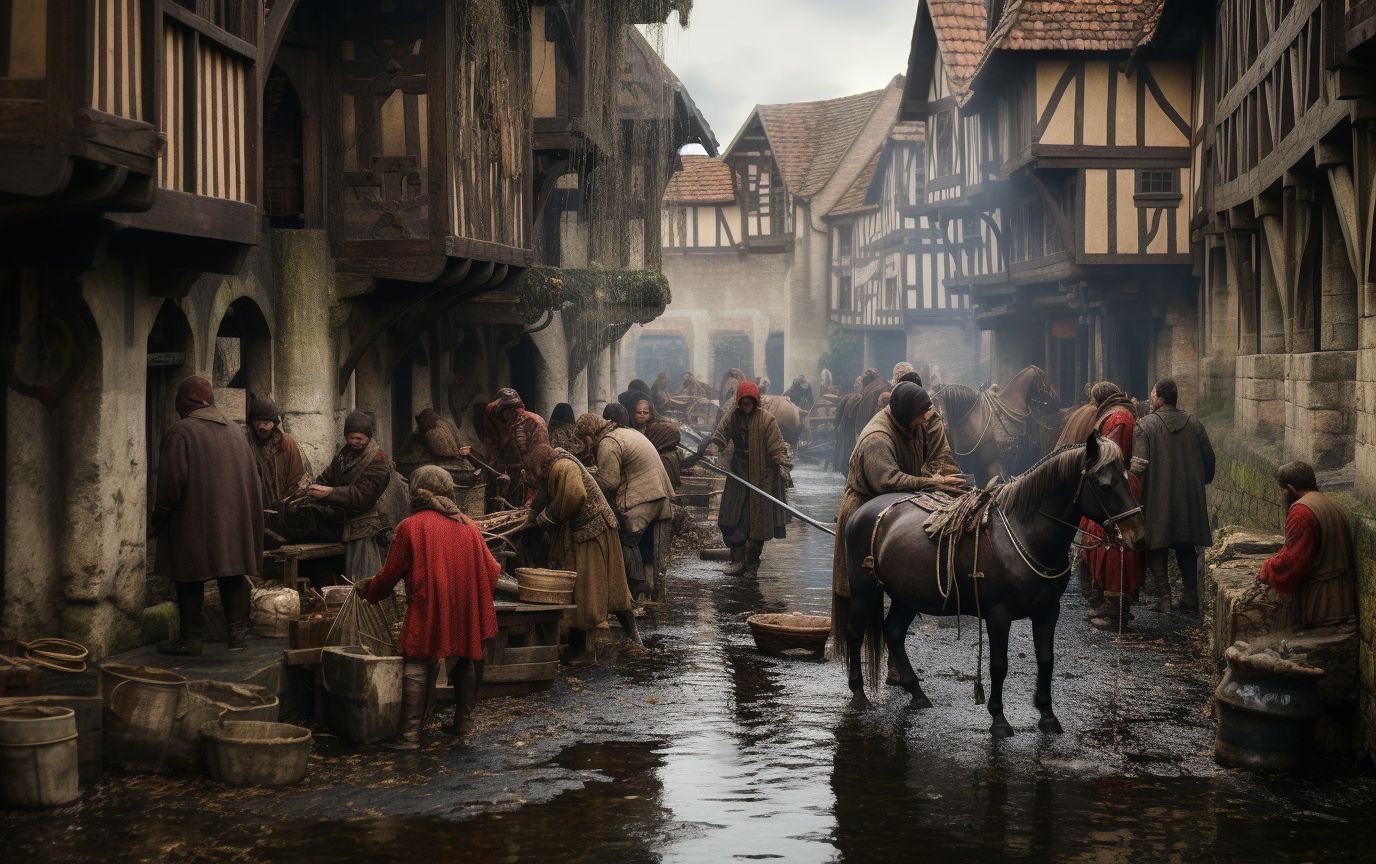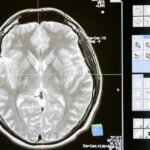
Welcome to a captivating journey through the annals of history, where we step back into the enchanting world of Medieval Europe—a time adorned with knights, majestic castles, and bustling societies.
In this exploration, we’ll unravel the intricate tapestry of this era, navigating through the feudal system, exploring the profound influence of the Catholic Church, celebrating the flourishing artistic and intellectual endeavors, acknowledging the inevitable challenges, and recognizing the enduring legacy that continues to shape our contemporary world.
The Feudal System

Imagine Medieval Europe as a vast chessboard, where the pieces aren’t just strategic moves but represent a complex social structure known as the feudal system.
At the heart of this system was a pyramid of power, where kings stood atop, followed by nobles, knights, and peasants forming the base.
This intricate arrangement wasn’t just a game; it was the foundation of societal order in a tumultuous era.
- Read also: Armour of an English Medieval Knight
- Read also: Unraveling the Medieval Era Timeline
The pyramid of power
- Kings: At the zenith of the pyramid, kings wielded ultimate authority, responsible for governing the realm.
- Nobles: Just below were the nobles, influential figures who held vast lands granted by the king in exchange for loyalty and service.
The guardians – knights
Positioned between nobles and peasants, knights were the guardians.
Their duty was to protect the realm, often through military service for their lords.
Working the land – serfs and peasants
- Serfs: Occupying the base were the serfs, bound to the land and serving the nobles. Their labor sustained the agricultural backbone of the feudal system.
- Peasants: While distinct from serfs, peasants also toiled on the land, contributing to the agricultural productivity that fueled the medieval economy.
Obligations and loyalties
- Feudal obligations: Each tier in this pyramid had obligations to the one above. Nobles pledged loyalty to kings, knights served nobles, and peasants worked the land for their lords.
- Feudal contracts: These were formal agreements that solidified the relationships, outlining the rights and responsibilities of each party.
Maintaining order in turbulence
In the turbulence of Medieval Europe, the feudal system provided a semblance of order.
It ensured a structured society where each member had a defined role, contributing to the overall stability.
The Role of the Catholic Church

The role of the Catholic Church extended far beyond the spiritual realm—it was a potent political, economic, and societal force.
Spiritual anchors
Majestic cathedrals stood as symbols of spiritual devotion and architectural marvels.
They weren’t just places of worship but also served as focal points of community life.
Political powerhouse
The Pope, seated in the Vatican, wielded significant influence not only in matters of faith but also in the political arena.
Papal decrees and excommunications could sway the course of kingdoms.
Economic influence
The Church was a major landowner, possessing vast estates that contributed to its economic power.
Agricultural production from these lands played a pivotal role in sustaining both the Church and the communities it served.
Stability amidst chaos
- Moral authority: In a world beset by uncertainty, the Church provided a moral compass, guiding individuals and communities through the complexities of life.
- Social order: The Church’s teachings on morality and ethics contributed to the maintenance of social order, offering a framework for righteous living.
Centers of learning
- Monastic contributions: Monasteries, often nestled in serene landscapes, weren’t just places of contemplation but also centers of learning.
- Preservation of knowledge: Monasteries played a crucial role in preserving classical knowledge. Monks meticulously transcribed and safeguarded ancient texts, ensuring the continuity of wisdom through the ages.
Educational pillar
The Church was a key player in the educational landscape.
Monastic schools provided education not only to future clergy but also to those seeking knowledge in various fields.
Artistic and Intellectual Achievements

Contrary to the shadows often cast upon the Dark Ages, Medieval Europe was a thriving crucible of artistic and intellectual achievements.
It witnessed the rise of Gothic architecture, where soaring structures touched the heavens, and stained glass windows became vibrant canvases narrating tales of faith.
The written word transcended mere text, evolving into illuminated manuscripts that adorned the realms of literature with artistic splendor.
Gothic marvels
Cathedrals reached unprecedented heights with the advent of Gothic architecture.
Flying buttresses, pointed arches, and ribbed vaults not only served structural purposes but also became expressions of divine grandeur.
Stained glass narratives
Stained glass windows, adorning the sacred spaces, emerged as vibrant canvases telling intricate tales of religious narratives.
The interplay of light and color elevated these windows to awe-inspiring works of art.
Illuminated manuscripts
Manuscripts transcended their utilitarian role, becoming illuminated works of art.
Scribes adorned pages with intricate illustrations and embellishments, turning written words into visually enchanting experiences.
Literary gems
Chaucer’s Canterbury Tales, a masterpiece of medieval literature, brought forth a rich tapestry of stories, providing a vivid snapshot of medieval life and culture.
Frescoes by Giotto
Giotto, a trailblazer in the world of art, adorned churches with frescoes that conveyed divine narratives with unparalleled skill. His work marked a shift towards naturalism and emotion in art.
Cultural Renaissance
The cultural milieu of medieval Europe fostered intellectual pursuits.
Centers of learning, often associated with monasteries, became hubs for the exchange of knowledge and ideas.
Challenges and Decline
Yet, like any epoch, Medieval Europe confronted its formidable challenges.
The haunting specter of the Black Death descended upon the continent, leaving in its wake a trail of devastation that claimed millions of lives, profoundly altering the fabric of societies.
This catastrophic pandemic, coupled with political unrest, invasive incursions, and economic undulations, cast a looming shadow over the medieval landscape.
The Black Death
The Black Death, an insidious bubonic plague, emerged as an unprecedented catastrophe, decimating populations and causing widespread social and economic upheaval.
The very foundation of medieval life trembled under its relentless onslaught.
Political unrest
Political instability became a pervasive challenge, as regions grappled with internal conflicts and power struggles. The established order of lords and monarchs faced challenges that reverberated through the corridors of power.
Invasive incursions
Medieval Europe faced external threats with invasions by various groups, adding another layer of complexity to an already tumultuous landscape.
The clash of cultures and territories further fueled the cauldron of uncertainty.
Economic fluctuations
Economic fluctuations, influenced by factors such as climate changes and trade disruptions, introduced an additional layer of hardship.
The medieval economy, intricately tied to agriculture and trade, experienced periods of instability.
Cracks in the feudal system
The once-stabilizing force of the feudal system began to reveal its vulnerabilities.
The intricate web of obligations and loyalties that defined medieval social structure showed signs of strain and fracture.

The Legacy of Medieval Europe
The resonance of Medieval Europe extends far beyond the boundaries of its own time, leaving an indelible imprint on the tapestry of our modern world.
The enduring legacy is a testament to the transformative impact of this era, influencing various facets that continue to shape our present.
- Code of conduct: The concept of chivalry, with its emphasis on honor, courage, and duty, has transcended the medieval period.
- Remnants in society: While the feudal system itself may have faded, remnants of its hierarchical structures linger in modern societal frameworks.
- Cultural and moral foundation: The Catholic Church, a central pillar of medieval society, has left an enduring mark on cultural and moral foundations.
- Intellectual resurgence: The Renaissance, often hailed as a rebirth of cultural and intellectual pursuits, drew inspiration from the foundations laid by medieval scholars.
- Struggle for rights: The Magna Carta, a product of the medieval struggle for rights and limitations on absolute power, laid the groundwork for modern constitutionalism.
Conclusion
- Read also: Exploring Medieval Era Facts
- Read also: Exploring the British Medieval Era
In the grand tapestry of human history, Medieval Europe occupies a unique and vibrant thread.
It was an era of contrasts – of faith and reason, of artistry and hardship.
As we reflect on the complexities of the feudal system, the profound influence of the Catholic Church, the flourishing of culture, and the challenges that marked its decline, we gain a deeper understanding of the roots that anchor our present.
So, let us continue to unravel the threads of history, appreciating the enduring legacy that Medieval Europe has bequeathed to us.
In doing so, we connect with our past, understanding that our present is woven from the rich fabric of time.



